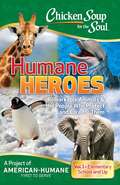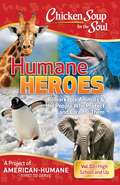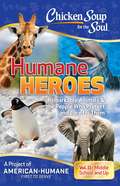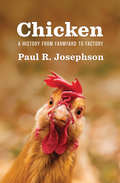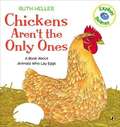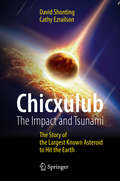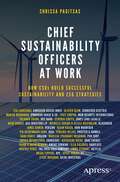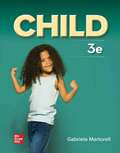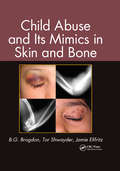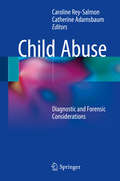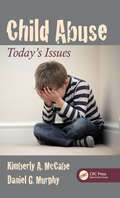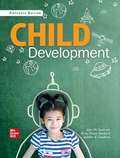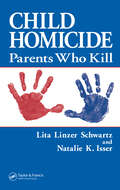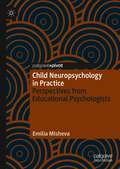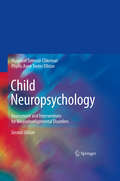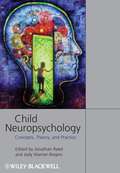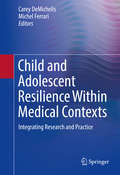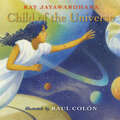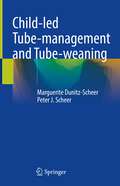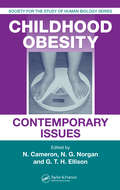- Table View
- List View
Chick Life Cycle (Science Vocabulary Readers)
by Elizabeth BennettLearn more about how an egg becomes a chicken.
Chicken Soup for the Soul: Humane Heroes Volume I
by American HumaneLaugh and learn as you read inspirational and educational stories about remarkable animals and the people who take care of them. Chicken Soup for the Soul: Humane Heroes, Volume I is full of real-life stories that are appropriate for 4th graders and up to read on their own. While teaching the value of humane conservation, children are introduced to some amazing animals – a puppy and a cheetah who become friends; an adopted gorilla; and some not-so-scary sharks, among others. Not only will children learn how these animals share and enrich our planet, they will also learn of the critically important work being done by humane heroes around the world that helps them survive.
Chicken Soup for the Soul: Humane Heroes Volume III
by American HumaneLaugh and learn as you read inspirational and educational stories about remarkable animals and the people who take care of them. Chicken Soup for the Soul: Humane Heroes, Volume III is full of real-life stories that are appropriate for children of all ages. While teaching the value of humane conservation, children are introduced to some amazing animals – an abandoned baby dolphin who cheats death; African elephants who were saved from slaughter; a lizard who was fitted with a prosthetic foot, among others. Not only will children learn how these animals share and enrich our planet, they will also learn of the critically important work being done by humane heroes around the world that helps them survive.
Chicken Soup for the Soul: Humane Heroes, Vol. I
by American HumaneLaugh and learn as you read inspirational and educational stories about remarkable animals and the people who take care of them. Chicken Soup for the Soul: Humane Heroes, Volume I is full of real-life stories that are appropriate for 4th graders and up to read on their own. While teaching the value of humane conservation, children are introduced to some amazing animals - a puppy and a cheetah who become friends; an adopted gorilla; and some not-so-scary sharks, among others. Not only will children learn how these animals share and enrich our planet, they will also learn of the critically important work being done by humane heroes around the world that helps them survive.
Chicken Soup for the Soul: Humane Heroes, Vol. II
by American HumaneLaugh and learn as you read inspirational and educational stories about remarkable animals and the people who take care of them. Chicken Soup for the Soul: Humane Heroes, Volume II is full of real-life stories that are appropriate for 7th graders and up to read on their own. While teaching the value of humane conservation, children are introduced to some amazing animals - two orphaned bear cubs; a lost and blind sea lion; elephants who help doctors fight cancer, among others. Not only will children learn how these animals share and enrich our planet, they will also learn of the critically important work being done by humane heroes around the world that helps them survive.
Chicken Soup for the Soul: Humane Heroes, Volume II
by American HumaneLaugh and learn as you read inspirational and educational stories about remarkable animals and the people who take care of them. Chicken Soup for the Soul: Humane Heroes, Volume II is full of real-life stories that are appropriate for 7th graders and up to read on their own. While teaching the value of humane conservation, children are introduced to some amazing animals – two orphaned bear cubs; a lost and blind sea lion; elephants who help doctors fight cancer, among others. Not only will children learn how these animals share and enrich our planet, they will also learn of the critically important work being done by humane heroes around the world that helps them survive.
Chicken Soup for the Soul: Humane Heroes, Volume III
by American HumaneLaugh and learn as you read inspirational and educational stories about remarkable animals and the people who take care of them. Chicken Soup for the Soul: Humane Heroes, Volume III is full of real-life stories that are appropriate for children of all ages. While teaching the value of humane conservation, children are introduced to some amazing animals - an abandoned baby dolphin who cheats death; African elephants who were saved from slaughter; a lizard who was fitted with a prosthetic foot, among others. Not only will children learn how these animals share and enrich our planet, they will also learn of the critically important work being done by humane heroes around the world that helps them survive.
Chicken: A History from Farmyard to Factory (Environmental History)
by Paul R. JosephsonWhy has the chicken become the meat par excellence, the most plentifully eaten and popular animal protein in the world, consumed from Beijing to Barcelona? As renowned historian Paul Josephson shows, the story of the chicken's rise involves a whole host of factors; from art, to nineteenth-century migration patterns to cold-war geopolitics. And whereas sheep needed too much space, or the cow was difficult to transport, these compact, lightweight birds produced relatively little waste, were easy to transport and could happily peck away in any urban back garden. Josephson tells this story from all sides: the transformation of the chicken from backyard scratcher to hyper-efficient industrial meat-product has been achieved due to the skill of entrepreneurs who first recognized the possibilities of chicken meat and the gene scientists who bred the plumpest and most fertile birds. But it has also been forced through by ruthless capitalists and lobbyists for “big farmer”, at the expense of animal welfare and the environment. With no sign of our lust for chicken abating, we're now reaching a crisis point: billions of birds are slaughtered every year, after having lived lives that are nasty, brutish and short. The waste from these victims is polluting rivers and poisoning animals. We’re now plunging “egg-first” into environmental disaster. Alongside this story Josephson tells another, of an animal with endearing characteristics who, arguably, can lay claim to being man’s best friend long before the dog reared its snout or the cat came in from the cold. Lionized in medieval romances and modern cartoons, the chicken’s relationship to humanity runs deep; by treating these animals as mere food products, we become less than human.
Chickens Aren't the Only Ones
by Ruth HellerRuth Heller's prose and pictures are the perfect means for discovering the variety of oviparous animals and their unique ways of laying eggs.
Chickens Aren't the Only Ones (Fountas & Pinnell LLI Blue: Level L)
by Ruth HellerRuth Heller's prose and pictures are the perfect means for discovering the variety of oviparous animals and their unique ways of laying eggs.
Chicxulub: The Story of the Largest Known Asteroid to Hit the Earth (Springer Praxis Books)
by Cathy Ezrailson David ShontingThis book tells the story of the catastrophic impact of the giant 10 Km asteroid Chicxulub into the ancient Gulf of Mexico 65. 5 million years ago. The book begins with a discussion of the nature of asteroids and the likelihood of future Earth-impacts. The story then turns to the discovery of a global sediment layer attributed to the fallout from the impact and a piecing together of the evidence that revealed a monster crater, buried under the Gulf. Reviewed is the myriad of geological and fossil evidence that suggested the disastrous sequence of events occurring when a "nuclear-like" explosion ripped through the sea, Earth, and atmosphere, thus forming the mega-crater and tsunami. The aftermath of the Chicxulub's event initiated decades and more of major global climate changes including a "Nuclear Winter" of freezing darkness and blistering greenhouse warming. A chapter is dedicated to the science of tsunamis and their model generation, including a portrayal of the globally rampaging Chicxulub waves. The asteroid's global devastation killed off some 70% of animal and plant life including the dinosaurs. The study of an ancient Cambrian fossil bed suggests how "roll of the dice" events can affect the future evolution of life on Earth. We see how Chicxulub's apparent destruction of the dinosaurs, followed by the their replacement with small mammals, altered forever the progress of human evolution. This book presents a fascinating glimpse through the lens of the natural sciences - the geology, climatology, and oceanography, of the effects of an enormous astronomical event.
Chief Sustainability Officers At Work: How CSOs Build Successful Sustainability and ESG Strategies
by Chrissa PagitsasRead over 20 exclusive, in-depth interviews with chief sustainability officers (CSOs) of Fortune 500 companies such as Amazon, Coca-Cola, and Procter & Gamble and globally recognized brands such as IKEA and Netflix. These CSOs reveal how they deliver positive environmental and social impact through their companies’ core products and services and generate revenue growth while tackling unique leadership, change management, regulatory and stakeholder challenges. Sustainability and environmental, social, governance (ESG) strategies are increasingly central to businesses’ growth strategy and risk management. As a result, the CSO has become more important as a driver of both revenue and strategy. Yet, no two CSOs are alike in their backgrounds, titles or even the scope of their roles. From former Peace Corps volunteers to supply chain experts, these C-suite leaders launch ambitious carbon emissions and net-zero goals, develop new products for a circular economy, target increasing the diversity of their company’s staff, align strategic projects to the UN Sustainable Development Goals and standardize reporting for the SEC, investors and more. What You Will Learn How global multibillion dollar businesses in the United States, Europe and Asia structure their sustainability strategyHow top sustainability executives drive both business value and positive environmental and social impact How CSOs landed in their roles without climbing a traditional career ladder Who This Book Is ForExecutives and board members generally or those establishing a sustainability or ESG strategy; current and aspiring CSOs and ESG leaders; business leaders partnering with sustainability leaders and teams; and students studying the integration of sustainability and business.Advance praise for Chief Sustainability Officers At Work:"Chief sustainability officers play a critical role in supporting the broader business transition to a more just and sustainable global economy. Through dialogue with influential sustainability professionals, Chrissa brings to life the essential role in bridging gaps and helping to eliminate the divide between "traditional" business functions, senior leadership, and the sustainability teams to drive transformational change within their firms." - Mindy Lubber, CEO and President, Ceres "Chief Sustainability Officers at Work, is a fresh new book by seasoned business leader Chrissa Pagitsas that offers succinct ways anyone can implement and achieve ESG goals – whether they own the company or simply aspire to improve its impact on people and the planet. Chrissa roots this book in her own experience leading change within major companies that not only improved the businesses where she worked but improved the markets within which they needed to thrive. This is a must read for a seasoned ESG practitioner as much as it is for the young professional just getting started. Chrissa knows it is imperative we all just get started doing better and she opens up the otherwise dark box of how-tos for all of us to do our part." – Dana Bourland, SVP, The JPB Foundation and author of Gray to Green Communities: A Call to Action on the Housing and Climate Crises.
Child
by Gabriela MartorellChild, Third Edition, is a brief but thorough account of human development from conception through adolescence, exposing students to substantial amounts of culture and diversity and immersing them in practical application. Child combines a commitment to scholarly content, critical thinking, and real-life application of theory with a visually engaging and dynamic, interactive format.
Child Abuse and its Mimics in Skin and Bone
by Tor Shwayder B. G. Brogdon Jamie ElifritzOf all children reported to child protective services for suspected maltreatment in any form, the percentage of substantiated cases of actual physical abuse is quite small. There are a number of dermatological or radiologically demonstrable musculoskeletal lesions that have been, or could be mistaken for, intentional physical abuse by the inexperie
Child Abuse: Diagnostic and Forensic Considerations
by Caroline Rey-Salmon Catherine AdamsbaumThis book offers an interdisciplinary approach to child abuse providing a comprehensive overview of the topic. From fetal life to adolescence, various patterns of child abuse are described in 23 chapters with highlight on early diagnostic features and differential diagnoses. Data on psychological and domestic violence is also presented. Readers will improve their knowledge in the field of child abuse, helping to identify such situations at onset and subsequently prevent recurrences. This volume outlines and summarizes the main different judicial processes for child abuse around the world. The book also provides the unique angle and information from experts in France, who unlike other countries, are fully independent of all other parties i. e. judges, prosecutors and families, thus having a unique insight to the origin and context of the violence. Insight to their approach can lead to better prevention of abuse around the world. Written by a panel of authors including paediatricians, radiologists, forensic scientists, a judge, a magistrate and a psychologist, this book is of interest to professionals involved in pediatrics healthcare, students, medical doctors or nurses. Beyond the field of health, the book may also concern professionals of social and judicial areas who deal with child abuse.
Child Abuse: Today's Issues
by Kimberly A. McCabe Daniel G. MurphyThe purpose of this book is to attempt to explore child abuse from a contemporary perspective in terms of its multiple elements, victims, and criminal justice responses. This text will: (1) begin to address the needs of those studying child abuse from a cultural perspective; (2) provide a general profile of today’s perpetrators of child abuse as well as conditions that may facilitate the abuse; (3) provide information on current modes of child abuse; (4) provide discussions on long-term consequences for adult victims of child abuse; and, (5) provide details in terms of criminal justice responses to child abuse in the United States and internationally.
Child Development: An Introduction
by John W. Santrock Kirby Deater-Deckard Jennifer LansfordThorough. Accurate. Reliable. Engaging. These are just a few words used by adopters and reviewers of John Santrock's Child Development. The topically-organized fifteenth edition continues with Santrock's highly contemporary tone and focus, featuring over 1,000 new citations. The popular Connections theme shows students the different aspects of children's development to help them better understand the concepts. Used by hundreds of thousands of students over fourteen editions, Santrock's proven learning goals system provides a clear roadmap to course mastery.
Child Homicide: Parents Who Kill
by Lita Linzer Schwartz Natalie IsserFrom governments that enact population-limiting legislation or commit wholesale neonaticide, to families who purposely allow a weak, infirm, or unfavorably gendered infant to perish rather than expend limited resources, neonaticide, infanticide, and filicide, are practiced on every continent and by every level of cultural complexity. Taking
Child Neuropsychology in Practice: Perspectives from Educational Psychologists
by Emilia MishevaThis book examines the relationship between educational psychology and neuropsychology. It is based on the findings from two original research studies – a national survey looking at educational psychologists’ views on neuropsychology; and interviews exploring the specialist role of educational psychologists in neuropsychological settings. The book considers key questions such as: Is neuropsychology applicable to educational psychologists’ day-to-day practice, or is it primarily a specialism? What is the role and unique contribution of educational psychologists working in child neuropsychological settings? Why are educational psychologists underrepresented amongst neuropsychologists and what does the training route entail? The book also considers why neuro-based concepts are so appealing to educators and the general public and explores the most prevalent misconceptions and neuromyths in education. Overall, the book aims to provide a unified account of the complex relationship between the disciplines through the voice of educational psychologists themselves and challenges some of the misconceptions about child neuropsychology as a specialism.
Child Neuropsychology: Assessment And Interventions For Neurodevelopmental Disorders,
by Margaret Semrud-Clikeman Phyllis Anne Teeter EllisonDuring the past decade, significant advances have been made in the field of neurodevelopmental disorders, resulting in a considerable impact on conceptualization, diagnostics, and practice. The second edition of Child Neuropsychology: Assessment and Interventions for Neurodevelopmental Disorders brings readers up to speed clearly and authoritatively, offering the latest information on neuroimaging technologies, individual disorders, and effective treatment of children and adolescents. Starting with the basics of clinical child neuropsychology and functional anatomy, the authors present a transactional framework for assessment, diagnosis, and intervention. The book carefully links structure and function--and behavioral and biological science--for a more nuanced understanding of brain development and of pathologies as varied as pervasive developmental disorders, learning disabilities, neuromotor dysfunction, seizure disorders, and childhood cancers. This volume features a range of salient features valuable to students as well as novice and seasoned practitioners alike, including: Overview chapters that discuss the effects of biogenic and environmental factors on neurological functioning. New emphasis on multicultural/cross-cultural aspects of neuropsychology and assessment. Brand new chapters on interpretation, neuropsychological assessment process, and report writing. An integrative model of neurological, neuroradiological, and psychological assessment and diagnosis. Balanced coverage of behavioral, pharmacological, and educational approaches to treatment. Case studies illustrating typical and distinctive presentations and successful diagnosis, treatment planning, and intervention. Important practice updates, including the new HIPAA regulations. Child Neuropsychology, 2nd Edition, is vital reading for school, clinical child, and counseling psychologists as well as neuropsychologists. The book also provides rich background and practical material for graduate students entering these fields.
Child Neuropsychology: Concepts, Theory, and Practice,
by Jody Warner-Rogers Jonathan ReedThe text begins with clear definitions of the concepts and methodology of brain development in infant and child neuro psychology. Section two examines normal and abnormal functional development and its impact on language, memory, and perception. The final section considers professional practice and provides valuable insights into the special problems of neuro psychological assessment of infants and children in clinical and educational settings.
Child and Adolescent Resilience Within Medical Contexts: Integrating Research and Practice
by Michel Ferrari Carey DemichelisThis book explores the social conditions that promote pediatric resilience. It presents resilience as a set of complex interpersonal, institutional, and political relationships that affect young patients' ability to "do well" in the face of medical adversity. Chapters analyze the impact of chronic or disabling conditions on children's development, while highlighting effective interventions that promote family well-being. This book integrates research from psychology, social work, medical anthropology, child life specialty, palliative care, public health, and nursing to examine a wide variety of family, cultural, and medical contexts. Practical strategies for supporting children and families are discussed, from meaningful assessment and interventions to social policy and advocacy. Featured topics include: Psychosocial factors influencing children with immune-related health conditions. Resilience and pediatric cancer survivorship within a cultural context. Promoting resilience in chronically ill children and their families during the transition to adolescence. Creating a context for resilience in medical settings. Promoting resilience through children's health and social care policy. Child and Adolescent Resilience Within Medical Contexts is a must-have resource for researchers, clinicians and other professionals, as well as graduate students in child and school psychology, child and adolescent psychiatry, social work, pediatrics, medical anthropology, nursing, educational psychology and policy.
Child of the Universe
by Ray JayawardhanaPerfect for fans of The Wonderful Things You Will Be and That's Me Loving You, this picture book by a renowned astrophysicist is a lyrical meditation on the preciousness of one child and the vastness of the universe.Just like the sun gives shine to the moon,you light up the world beyond this room . . .You are grand and marvelous, strong and mysterious.The history of the world is in your fingertips.A lyrical meditation on the preciousness of one child and the vastness of the universe, this gorgeously illustrated picture book shares the immensity of a parent's love along with the message that we are all connected to the broader cosmos in important and intimate ways. A perfect bedtime read-aloud, Child of the Universe is a book to cherish forever.The author is an astrophysicist who has been fascinated by the universe since he was a child. As a parent, he has developed a new appreciation for the deep connections between billions of years of cosmic evolution and this one tiny human.
Child-led Tube-management and Tube-weaning
by Marguerite Dunitz-Scheer Peter J. ScheerThis book is the result of thousands of encounters with tube-fed infants and their families over the past four decades. The ailing and fragile children, suffering from a myriad of medical conditions acted as muses and mentors teaching more than could be expected. This book is addressed to medical professionals, early interventionists, pediatricians, child surgeons, nurses, dieticians, occupational therapists, speech and language pathologists (SLPs), feeding specialists, psychologists, physiotherapists, infant psychiatrists as well as parents. The medically fragile child (MFC) is the subject of the authors’ work when it is concerned with enteral nutrition support (ENS) by means of a feeding tube (ENT). As pediatricians and psychotherapists, they have been treating eating and feeding disorders of children since 1986 and with this book they pass on knowledge they have garnered over three decades. Over 5,000 children have been weaned off their feeding tubes. Tube weaning requires the evaluation of medical, nutritional, sensory, developmental, metabolic and growth-related findings. The review of the literature around this subject has provided a source of inspiration as well as critical self-reflection; the authors wish to offer their insight and ideas on how to approach child-led tube-management and tube-weaning to all healthcare professional involved in the management of these children.
Childhood Obesity: Contemporary Issues
by George Ellison Gerard Hastings Noel CameronThe consequences of childhood obesity are serious and far reaching, with both physical and psychological components that add to its complexity. Childhood Obesity: Contemporary Issues provides an up-to-date account of the increase of obesity in children, its causes, and its prevention. The expert editorial panel has chosen contributors with consider

